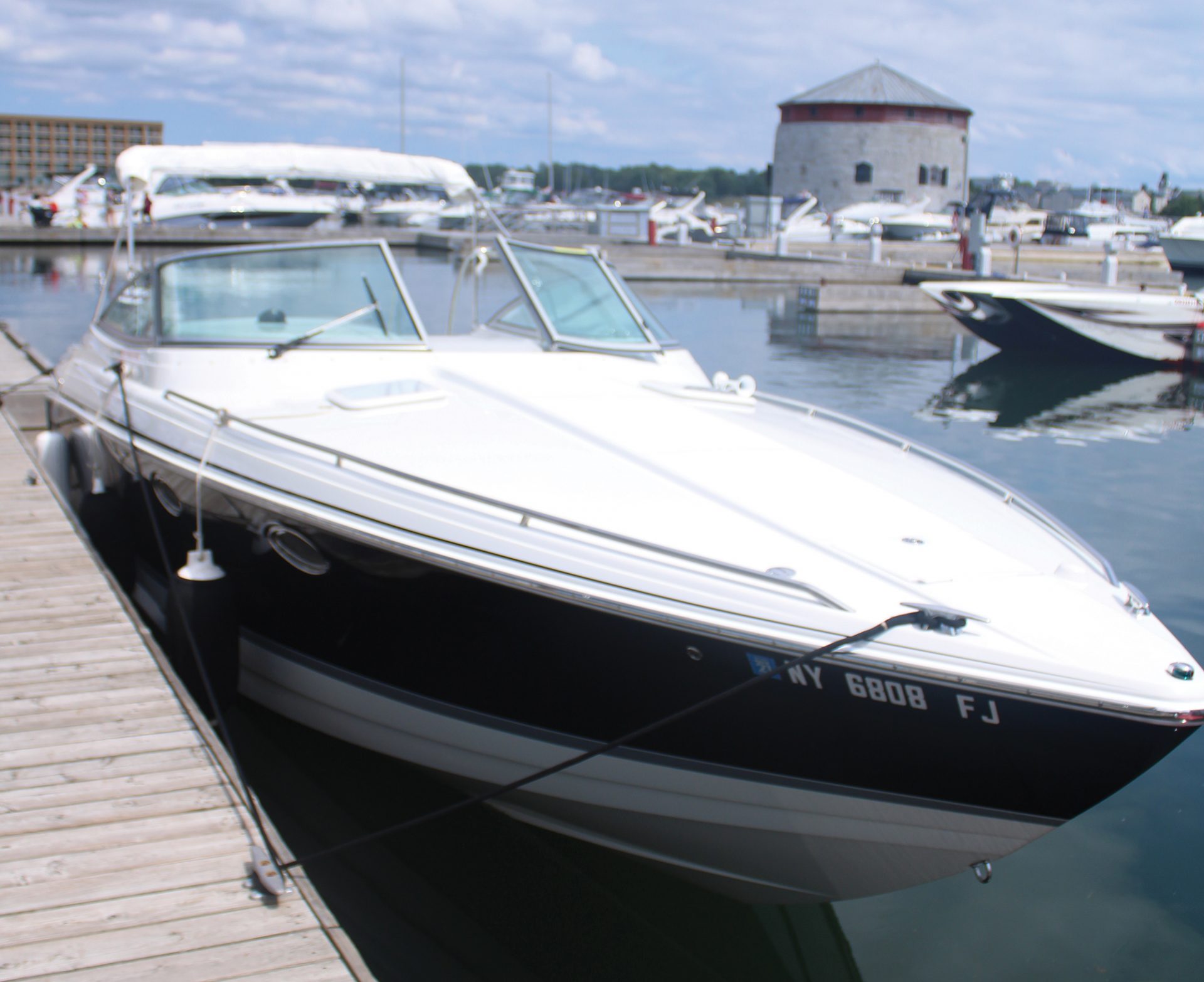By Dusty Miller
One of the biggest challenges when landing a boat is a wind blowing off the dock. You try to bring the vessel parallel to the dock and the wind just pushes you away. It’s amazing how quickly even a little wind pushes around a big boat.
A couple of years ago I watched a captain of a 34-foot twin-engined cruiser make at least 10 attempts to bring his vessel parallel to the dock against the wind. I was frustrated just watching, so I can imagine how he felt. Finally, he gave up and tried a different approach. He eased the boat up to the dock, bow first, and let someone off to wrap the bow line around a bollard. With the bow secure he drove the boat forward.
Unfortunately, that just drove the bow into the dock and did not change the stern position. Finally, mad enough to bite through a steel cable, the captain had someone take a stern line onto the dock and haul the boat into the wind, eventually seeming it.
Like most boating challenges, this one can be met with a little understanding and a lot of practice. When confronted with this situation you need to have enough power and enough forward motion to compensate for the wind. Obviously, you have to be going toward the dock significantly faster than the wind is pushing you back and that takes confidence.
Face it, you are beaded toward that bow-eating dock at a good rate of speed, looking for all the world like you are going to bash into it. But, of course, you do not. At the last second you tum the bow away. The momentum of the vessel overcomes the force of the wind and the boat slides up to the dock, perfectly parallel. Speed, in this case, is a necessity and so is good timing.
The best way to practice this maneuver is when the winds are light. Set aside some time and find an open dock. Put your fenders out and aim your bow toward the dock and make your approach very slowly. At the last second, turn the bow away from the dock and your boat will tum parallel. If you make your tum too soon you will be parallel to the dock but you might have to swim the line ashore. If you make your turn too late … well, you do not want to make your tum too late.
When you can land at a slow speed, start picking it up. Do exactly the same thing a little faster and then ‘a little faster and then faster yet. Make sure you can do it perfectly at each level before speed up. Take your time. If you find the momentum is carrying your boat too quickly against the dock, you will have to throw it into reverse to slow down.
Now, if you ever have to land when the winds are so strong that you do not feel confident enough to land parallel, there is another way. That cable-biting captain had the right idea – at first. Bring your boat up to the dock; let someone off the bow with a line to secure the bow to the bollard. Next, using the outside gearshift, the one opposite to the side you want to land on, put it in reverse. The vessel will move backward and when it begins to pull against the secured bow line, the stern will come in against the dock.
If it is more appropriate to approach the dock stern first, you will find it even easier to control because that is where all your power is. You are, in essence, pulling the boat in rather than pushing it. When you are up to the dock, let someone off the stem and secure a line. Then, again using the outside gearshift, put it in forward and the bow will come toward the dock, into a parallel position. As soon as the boat is parallel, secure a line at the other end of the boat and you are home.
Learning a couple of small tricks will make your landing easier. When you have either the bow or stern secured to the dock you do not want to drive the boat steadily in the way that ill-fated captain did. Put it into gear then immediately bring it out and repeat. Do not touch the throttle, just put the boat in gear and take it out. That way you stay in control. You give it just enough to bring it in. Touch in. Touch out. That’s the trick.
When parking a single engine vessel, secure the stern line to the wall and touch in forward. To bring the bow in, steer toward the wall, not hard over, just a quarter turn or so. If you start coming in too quickly, you adjust by steering slightly away from the wall. That slows your sideways movement. With minor adjustments, steering toward and away from the wall, and touch in touch out with the throttle, you will bring the boat parallel and stay in control. If your bow line is secured, instead of the stem, obviously you bring the stern in by putting the engine in reverse and steering toward the wall, making the same kind of adjustments.
I cannot stress enough how important it is to practice this parallel parking in light air. If the wind is too strong the first time, you might get into trouble. At best you might look like the frustrated captain. At worst, you could damage your boat or another. But start, as I said, in a gentle breeze off the wall and you will be away to the races. Your confidence will grow with each successful landing and you will be ready for the wind when the time comes.
Keyword : boat handling, boating tips, docking, docking your boat boat handling, boating tips, docking, docking your boat
